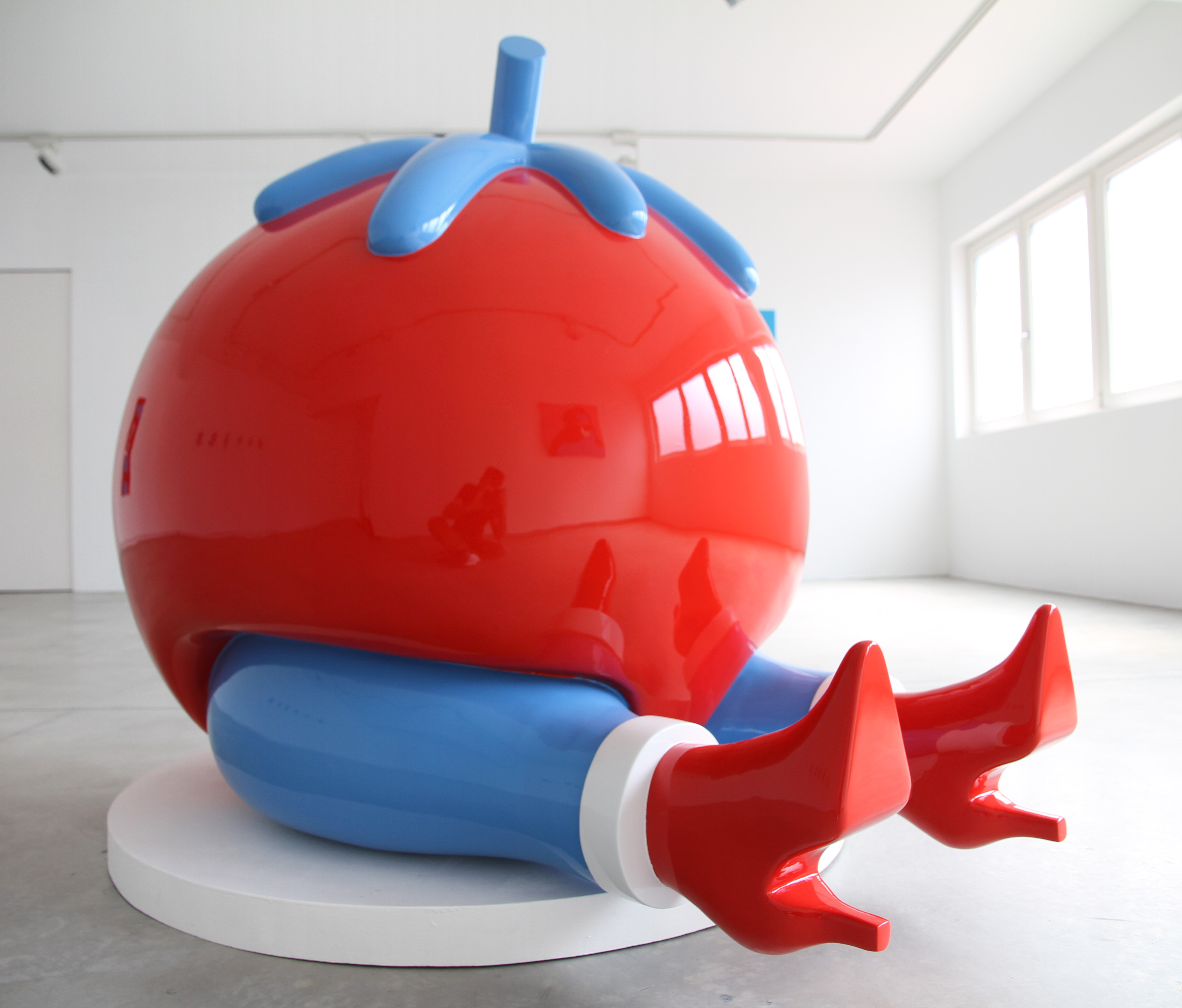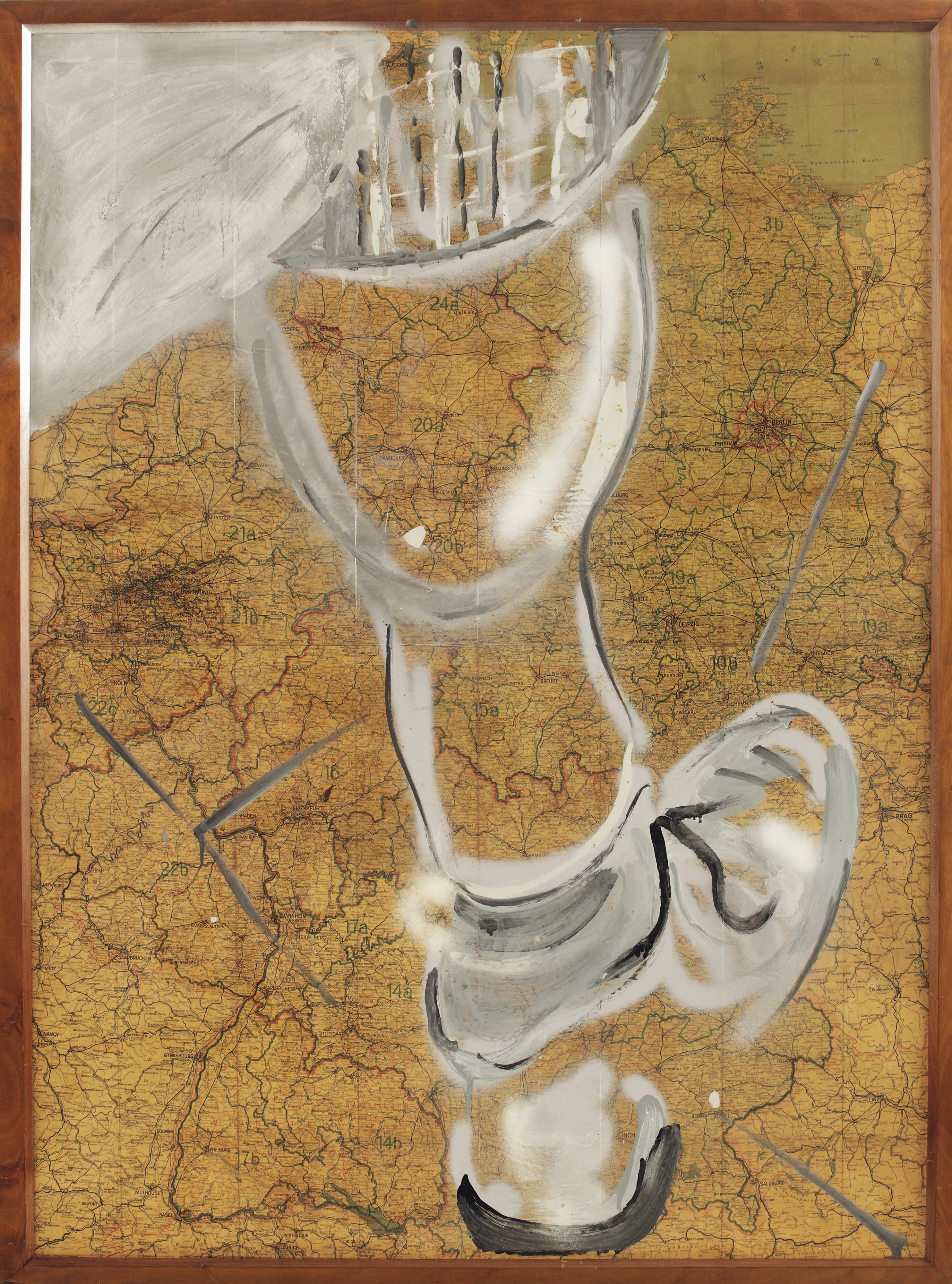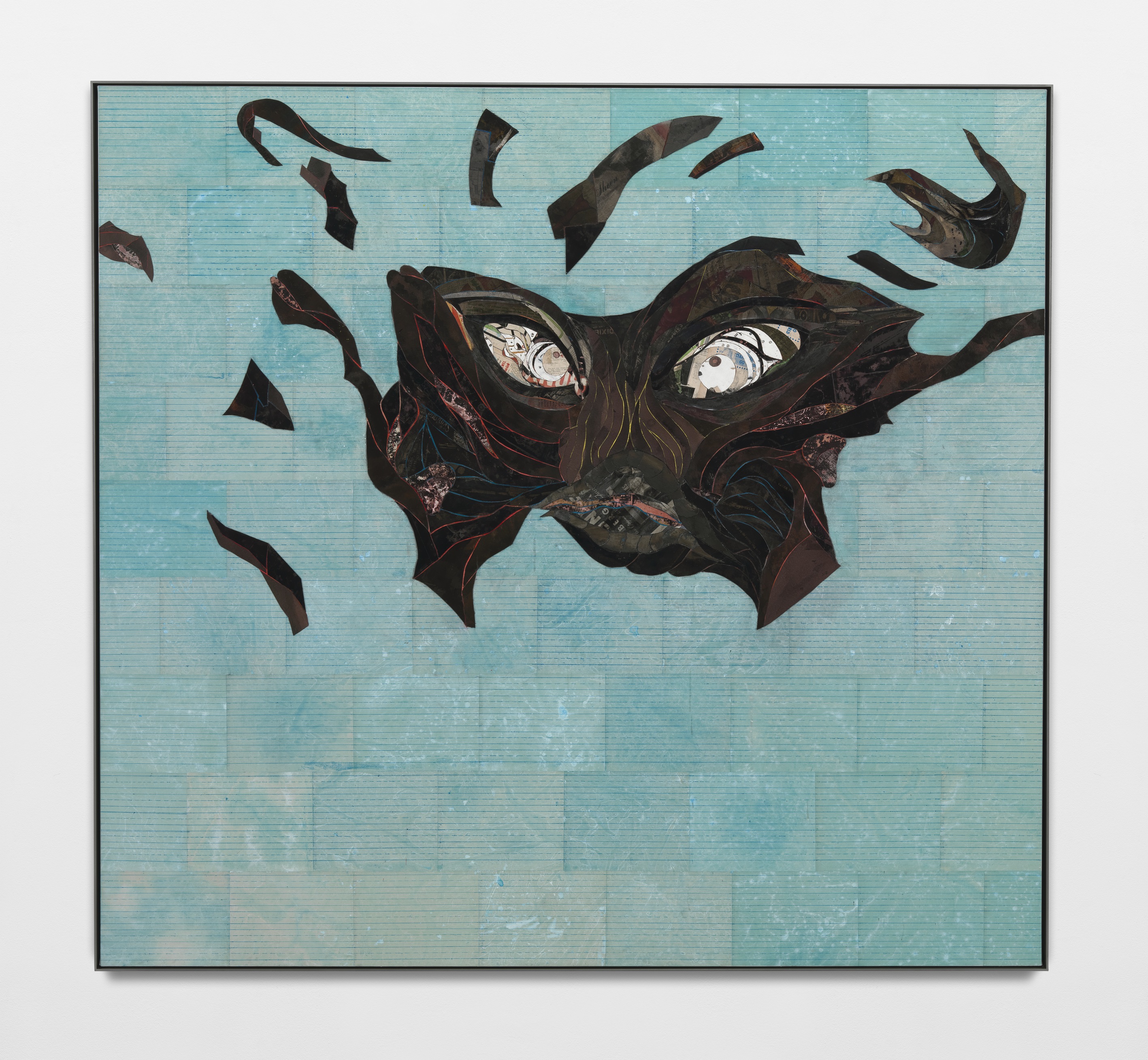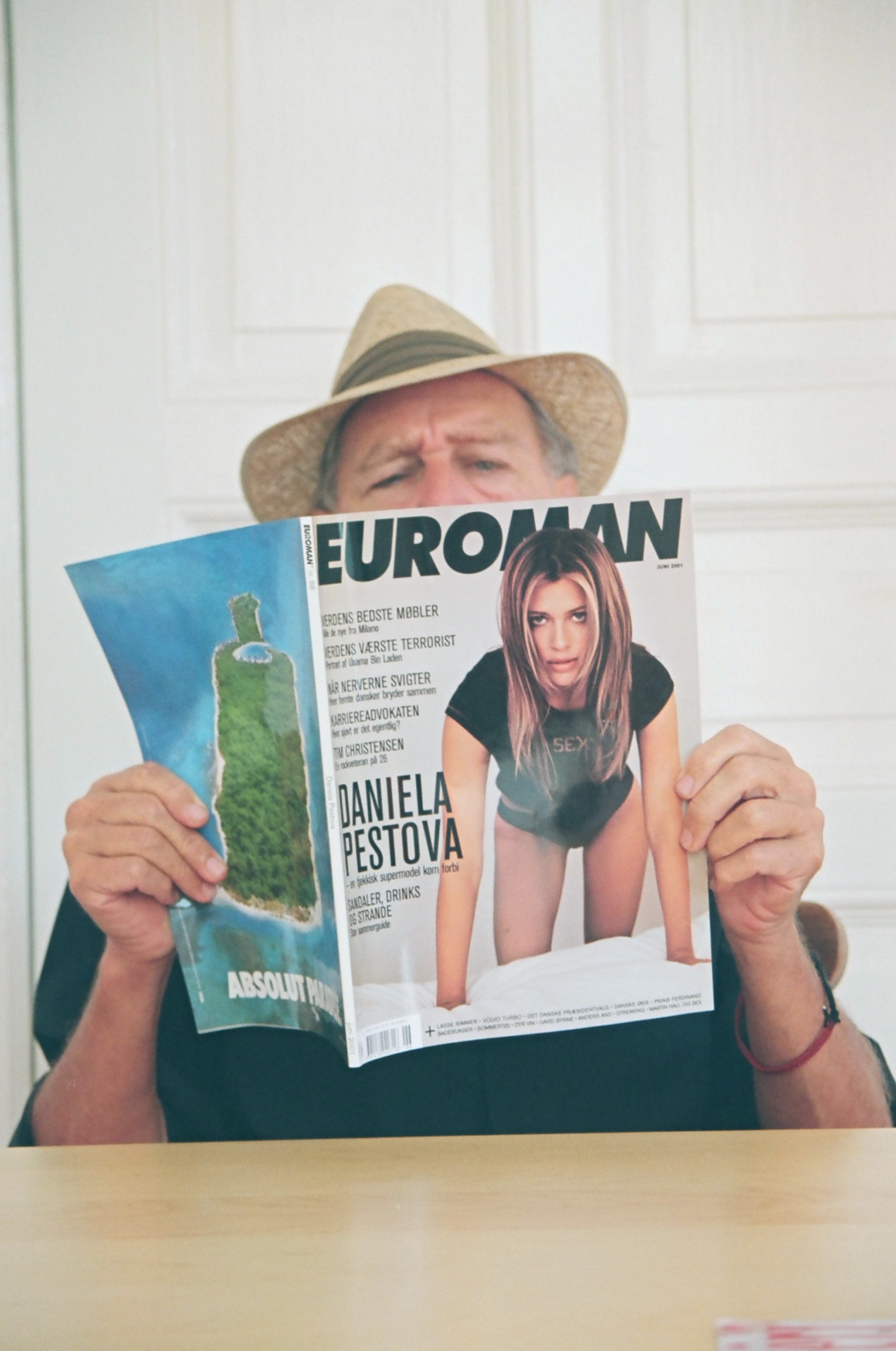This week I was in Brussels. Brussels doesn’t have a contemporary art museum. (Although one is planned, controversially, in partnership with the Pompidou in Paris, due to open in 2018 in a former Citroen warehouse).
This museum-lessness is strange for a capital city that some see as the “centre of Europe”. Even within Belgium, both Antwerp and Ghent have their own contemporary art museums. The lack of a museum means the art scene is in Brussels is lead by smaller-scale commercial galleries and private institutes, and fairs such as Art Brussels and Independent. This situation, in a way, reflects the politics of the place, and the difficulties of doing things on a larger scale involving more people in Eurocratic Brussels. There are nineteen mayors in the city, and Brussels is an anomaly, a French-speaking city in the Flemish part of the country–not without its own tensions. And Belgium is, after all, the country that’s had the longest period without a government in history.
The lack of a major contemporary museum in Brussels means there are interesting alternative “museum” models here that interrogate the meaning of a museum today, in a place like Brussels. There are art centres, such as La Loge, housed in a former Masonic Temple, and ARGOS, a national institute for film and video, that started out as a festival in the late ‘80s. There is also the recently opened cat museum, showing a collection of artworks featuring felines. (It’s actually surprisingly good).
But I wanted to find out about two arts spaces on opposite sides of the city, one ten years old, the other only open a year–both directly addressing the idea of a museum for Brussels in different ways–and how they started out.
On the morning of March 22, 2016, three suicide bombs ripped through Brussels airport and Maalbeek metro station, a coordinated terrorist attack that took the lives of thirty-two people and injured more than three hundred. The same morning, in the neighbourhood of Molenbeek–a community that had found itself in the international press as “a no-go zone”, and a “breeding ground of radicalism”, the home of two terrorists responsible for the attacks in Paris–the Millennium Iconoclast Museum of Art (MIMA) was opening its inaugural exhibition.
It turned out, strangely, to be the best of worst times to be opening the city’s newest museum. MIMA found themselves suddenly positioned as spokespeople of the “real” Molenbeek, a part of Brussels no-one had heard about before but now wanted to know everything about. Articles in major newspapers on the museum hastened to tell a different story about this “terrorist” neighbourhood, and a new cultural venue was the perfect springboard.
MIMA was founded by two Belgian couples: Michel and Florence de Launoit, and Alice van den Abeele and Raphaël Cruyt. Van den Abeele and Cruyt have lived in Molenbeek for twelve years. While they weren’t surprised about Molenbeek’s sudden notoriety, they see a more nuanced, complex picture of their home: it is one of the poorest neighbourhoods in Europe, further fractured by the 2008 financial crisis that allowed many extremist groups to pour money in; schismatic but also full of harmonious exchanges that take place in the eighteen different languages spoken there.
It’s the atmosphere of Molenbeek itself that has, in a way, inspired their vision for the museum, to present subcultural movements that have happened since the turn of the millennia around the world and that have made an impact on wider society. For MIMA, it’s the stories they can tell through art that are important.
None of the four have any institutional experience. Cruyt and van den Abeele have run a commercial gallery in central Brussels for a decade, but three years ago decided that they wanted a change in direction. A museum provided the perfect opportunity to scale up their activity and move away from the art market. Although many could be suspicious about their motives, as owners of a commercial space. “I was really glad that we were asked that question,” Cruyt told me. They received, he said, a lot of criticism early on from the local arts scene. “But the museum audience is not buyers and collectors. The work we present is totally uncommercial. Having a show there isn’t going to add a single cent of value to the artist’s work, that’s not our aim.”
Walking around their space, I would have to concede his point.
Together with partners Florence and Michel de Launoit, they found an abandoned brewery on the border of the Brussels Canal–a stone’s throw from home. The property owner was looking to convert the space for cultural use, and accepted their proposal. They then had the task of renovating an enormous space that had been abandoned for twenty years. None of the MIMA founders had any experience of converting a space of this size.
The renovations took more than a year, and they now pay rent that goes back to the owner to cover the costs. The museum is private and proudly independent, both in its programme and its financing. Half of their income comes from ticket sales (exhibitions cost 9.5 euro, 7.5 euro for students, although they offer some concessions, especially to schools) as well as the restaurant, bar and shop they run on the site, while the rest is spread between sponsorship (their largest sponsors is BNP Paribas bank), corporate event hire, partnerships and a small sprinkling of government funding. An initial 100,000 euros each came from three investors, who have a share in the museum’s permanent collection. They employ five staff.
The collection, displayed on the upper floors, is still in an incipient phase, Cruyt explains. We’re standing in the museum’s current exhibition–by Dutch artist Boris Tellegen. It’s Wednesday afternoon, and the museum is busy. Young children with the parents and pensioners pass by. Their first exhibition, by Maya Hayuk, Swoon, Faile and Momo, was attended by forty thousand people.
Audience is very important to MIMA. “We want to communicate to a large audience” Cruyt explains. “If we don’t have our public, there’s no reason to do it. It’s important to give back to the place. We want to make people more confident about going to a museum, we’ve had people here on their first ever visit to a museum, and that is exciting, I have to say.”
What about the other galleries in Brussels? Have they been supportive? “I think they think we are not relevant, because we aren’t doing things that are related to them.” Cruyt admits candidly, later on that day. “Some people don’t want to come, and that’s fine, I completely understand that.” He adds. “We want to do something much broader.”
When I return to the museum the next day, it’s packed with school children.
Across town, in Forest–another peripheral neighbourhood with a problematic reputation–is Brussel’s most established, longest-running contemporary art museum–that is, in fact, not a museum at all.
WIELS was founded ten years ago, a local initiative, that garnered support to renovate a 1930s brewery that had been empty for twenty-five years. The renovations, says Micha Pycke, WIELS communication manager, have only really just been finished.
“WIELS’s ambition emanated initially from private initiative and it aimed to align itself with the country’s public cultural institutions.” Pycke says. “Given its particular location within the city of Brussels, WIELS also hoped to have the opportunity to make an active contribution to the revitalization of the neighbourhood in which it has its roots. Today, we see that both aspirations have become reality.”
Initially, WIELS was partnered with Brussels Capital Region, who provided much of the primary financing, but it was also supported by “a very large number of people and private enterprises.” Pycke adds.
It operates as a private non-profit institution, funded “50% by public money and 50% by private money.” Of the private funding, in a similar economic model to the one MIMA now use, half the money comes in from revenue from tickets, the cafe, and events.
There is a large communal cafe space and bookshop, at WIELS, as well as a large community garden, with forty vegetable plots, and a residency programme offering year long and six-month studio spaces to international and Belgian artists respectively. “WIELS is located in a formerly industrial and now lower-middle class neighbourhood. This social reality, full of challenges and potential, is and has always been an integral and important part of WIELS’s identity. WIELS wants to be a place of discovery, open to everyone, and especially to our neighbours.”
WIELS is widely perceived as a museum because it fills that gap in Brussels. This is good–they have a solid international reputation–but also means that people come with expectations and might be unpleasantly surprised. There are no “blockbuster” shows like those of other major urban museums. They also don’t have a permanent collection.
A taste of what they stand for is comprehensible when I take a tour of their current exhibitions: Irish Turner-Prize winner Duncan Campbell and unknown Belgian artist Sven t’ Jolle. Both shows are very experimental, pointedly political and distinctly anti-capitalist. The t’ Jolle exhibition in particular has been a success with Belgian audiences, and this is WIELS’s aim, to introduce key artists who have been under the radar–or completely off it.
“We must redefine what Brussels stands for. Because Brussels is not a small region anymore. It houses the headquarters of two major international organizations (EU and NATO). If we want to be respected today in certain spheres of society, we must have a collection of contemporary art.”
Why has this been so difficult in Brussels? I wonder. “Over the last ten years, three thousand museums have opened in the world, three hundred in China alone in the last two or three years. In Brussels, we are discussing the creation of a Museum of Contemporary Art. Elsewhere, the decision is made before the problem arises. But strategic decisions have proved problematic in Brussels.”
“Brussels is at the heart of the ecosystem between Paris, Cologne, London and Amsterdam. The project is artistically and intellectually very ambitious, but we must dare to stand next to the Centre Pompidou, Ludwig Museum, Tate Modern and the Stedelijk Museum. In times of Trump and Le Pen, we must show what the idea of European art stands for.”
It’s not easy to do this. Clearly, blockbusters pull people in. On top of this, the tourists who might visit irrespective of what’s on come less often since the terror attacks last year. Sticking to their guns has been a slog for WIELS, and Pycke says they have had hard times. Now, though, things are looking brighter, and they are busy preparing for their biggest event yet in Spring.
“The absence of museums in the societal debate and the associated lack of a location and place at which to conduct that debate in a calm and symbolic way, hinder the possibility of redefining the role and significance of culture today and the position of art in wider society.” Pycke asserts.
“It flows logically from this that WIELS should mark its tenth birthday by helping to set out a substantive framework or blueprint for a ‘possible’ museum of contemporary art for Brussels.” The project, aptly titled The Absent Museum will launch on 20 April during Art Brussels, reflecting on WIELS’s journey over the last decade and exploring its future.
I’m inspired by the gung-ho passion of both of these museums. Though they have very different manifestations, their agendas seem aligned, bucking against convention and putting such effort into making their spaces accessible and inviting for local audiences. It takes guts to do things yourself on such an ambitious scale, particularly in this bureaucrat’s paradise. So what advice would WIELS give to someone who wants to set up their own museum?
“Stay true to yourself, don’t give up, be bold, be brave, go crazy.”
















